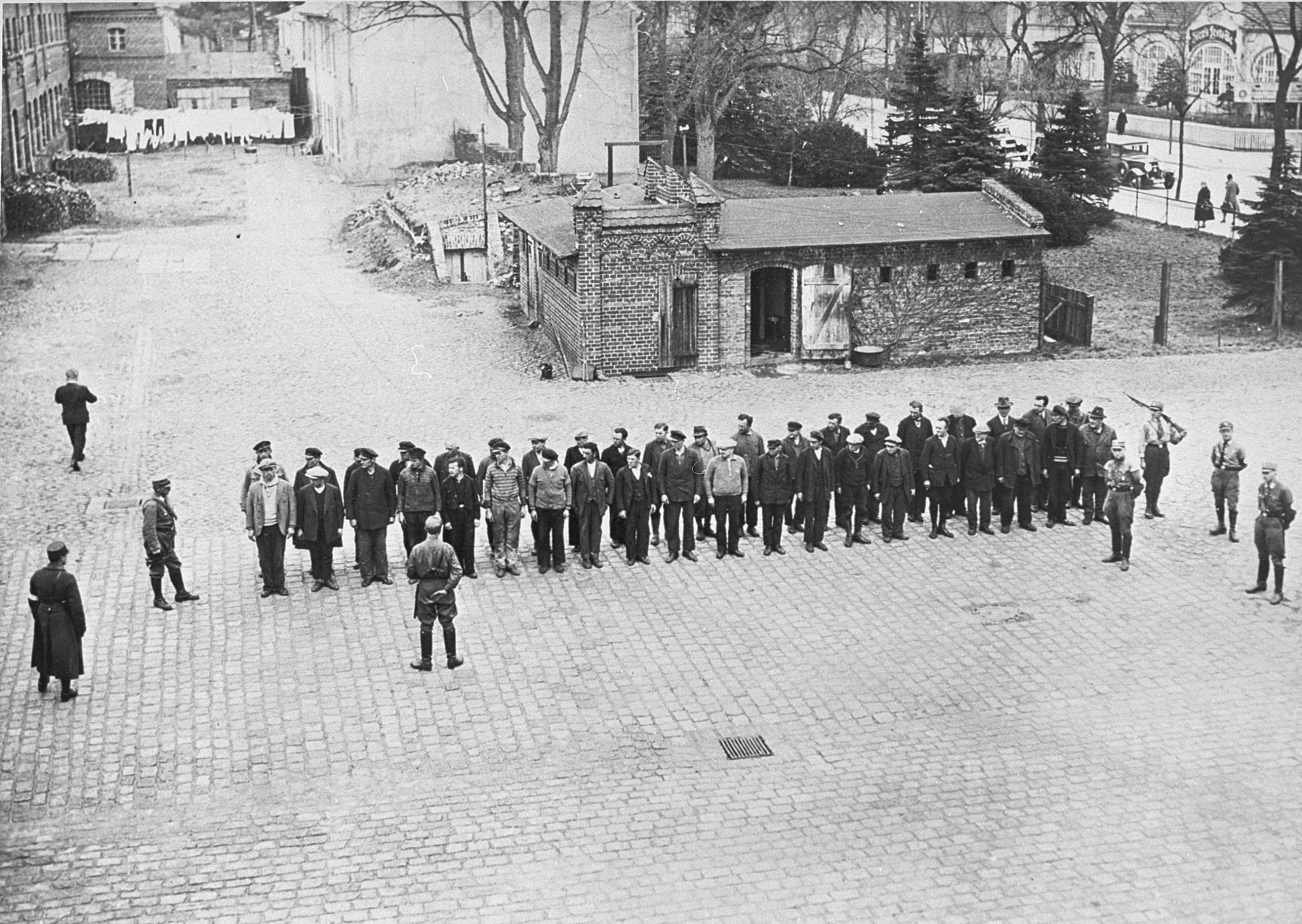Part 2: Early Nazi Incarceration Sites (1933-1939)
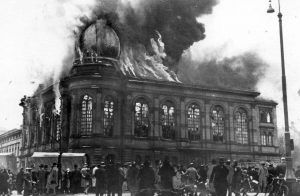
Kristallnacht (“Crystal Night,” or, “The Night of Broken Glass”), was a pogrom against the Jews throughout Nazi Germany on November 9-10, 1938. Almost 100 people were killed, 30,000 men were arrested, over 1,000 synagogues were burned, and over 7,000 Jewish businesses were destroyed or damaged. The burning of the Boemestrasse Synagogue in Frankfurt, Germany, November 10, 1938. Photo credit: Auschwitz-Birkenau State Museum
Approximately 100,000 to 200,000 political opponents and critics of the Nazi party were seized within a year of Hitler’s election, while many other groups were targeted in later years, including Jews, Jehovah’s Witnesses, homosexuals, Roma and Sinti, and so-called “asocial” people. These people were held in concentration camps, sites that operated outside of normal laws, as the Third Reich perfected a system of permanent terror.
The first wave of arrests started on February 28, 1933, when the Nazis exploited the arson attack on the German parliament (Reichstag) to cement their political control. State police and Nazi paramilitaries—the Sturmabteilung, also known as the SA, and the Schutzstaffel, also known as the SS—apprehended communists, Social Democrats, and trade unionists. The majority of prisoners were men, but women activists were also taken into custody.
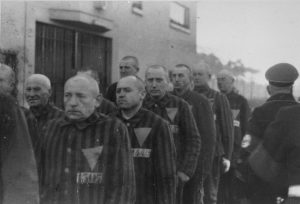
Uniformed prisoners are assembled in front of a Nazi guard at the Sachsenhausen concentration camp near Oranienburg, Germany, 1938. Photo credit: USHMM #76278
Regular prisons did not have enough space for the flood of inmates, so more than 100 makeshift camps appeared all over Germany. Old hotels, rundown factories, sports stadiums, and ships became sites of detainment. Most camps were opened by local or state officials, and many even lacked barbed wire. After 1934, the camps were overseen by Heinrich Himmler, who by 1936 became the head of the SS and chief of German police (Chef der deutschen Polizei). Himmler closed most of the primitive sites and instead organized an incarceration system with the purpose of controlling Nazi enemies and using them for forced labor. Dachau (near Munich) was one of the first concentration camps and served as a model incarceration site.
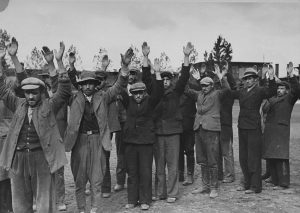
Polish and Jewish citizens of Aleksandrów Kujawski, Poland hold their arms in the air during their arrest by Nazi German soldiers, September 1939. Photo credit: USHMM #08765
Later, other non-Aryan groups were targeted as the Nazis attempted to “purify” the German race. An estimated 100,000 gay men were arrested, deemed to be degenerates who hindered population growth, in addition to many Jehovah’s Witnesses who were arrested for refusing military service. In the spring of 1938, some 10,000 Roma and Sinti, as well as homeless people were also sent to various concentration camps within Germany.
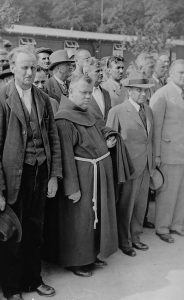
Newly arrived Czech prisoners still in their civilian clothes, as well as a Franciscan monk, stand at roll call in the Buchenwald concentration camp, Germany, 1939. Photo credit: USHMM #13131
Thousands of Jews were taken to concentration camps throughout the 1930s, but those arrested were mostly critics of the Nazi party. Following Kristallnacht (the “Night of Broken Glass”)—the November 1938 pogrom, or anti-Jewish riot—nearly 30,000 Jewish men were taken to concentration camps, marking the first time that German Jews were imprisoned on a mass scale. Most were released within a few months, but only after agreeing, through a signed declaration, to leave Germany forever.
Prisoners were treated horribly during their captivity. Although killing remained uncommon at that point, most inmates endured some form of abuse, with Jews being singled out for the most brutal treatment. Floggings, where prisoners were tied down and struck with a heavy stick or whip, occurred frequently, while forced labor was also a method of punishment. Prisoners often had to perform pointless and strenuous tasks, such as hauling heavy rocks back and forth. In later years, prisoners were forced to build roads, construct new camps, and help the Nazi war effort.
After Himmler centralized the concentration camp system, he also standardized how prisoners were processed and branded as enemies based on their identity, ethnicity, religion, gender, sexual orientation, or political affiliation. Prisoners had their heads shaved and were outfitted with standardized uniforms. The “triangle system,” where the SS identified the reason for a prisoner’s arrest by color-coded badges, was instituted across the camp system by 1938.
